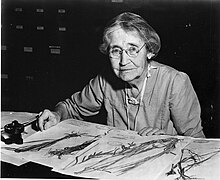Our website is made possible by displaying online advertisements to our visitors.
Please consider supporting us by disabling your ad blocker.
Agrostology

Agrostology (from Greek ἄγρωστις, agrōstis, "type of grass"; and -λογία, -logia), sometimes graminology, is the scientific study of the grasses (the family Poaceae, or Gramineae). The grasslike species of the sedge family (Cyperaceae), the rush family (Juncaceae), and the bulrush or cattail family (Typhaceae) are often included with the true grasses in the category of graminoid, although strictly speaking these are not included within the study of agrostology. In contrast to the word graminoid, the words gramineous and graminaceous are normally used to mean "of, or relating to, the true grasses (Poaceae)".
Agrostology has importance in the maintenance of wild and grazed grasslands, agriculture (crop plants such as rice, maize, sugarcane, and wheat are grasses, and many types of animal fodder are grasses), urban and environmental horticulture, turfgrass management and sod production, ecology, and conservation.
Botanists that made important contributions to agrostology include:
- Jean Bosser
- Aimée Antoinette Camus
- Mary Agnes Chase
- Eduard Hackel
- Charles Edward Hubbard
- A. S. Hitchcock
- Ernst Gottlieb von Steudel
- Otto Stapf
- Joseph Dalton Hooker
- Norman Loftus Bor
- Jan-Frits Veldkamp
- William Derek Clayton
- Robert B Shaw
- Thomas Arthur Cope
Previous Page Next Page


